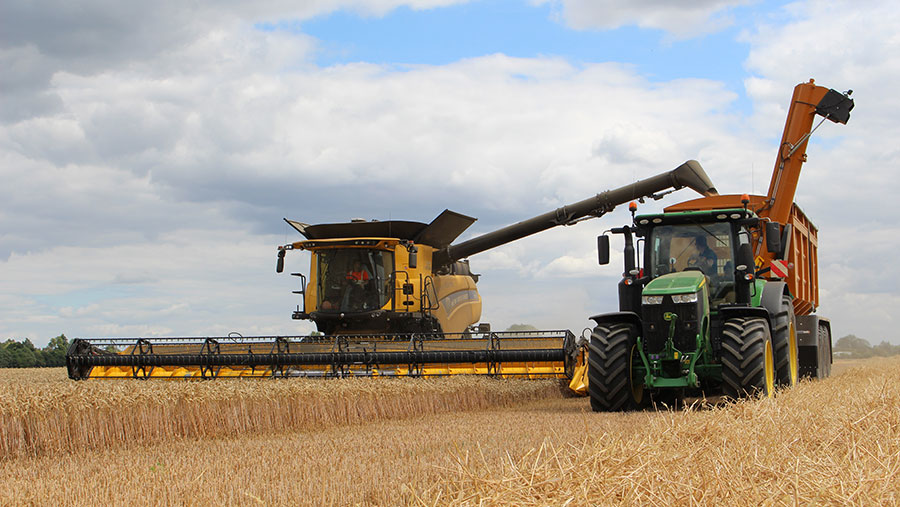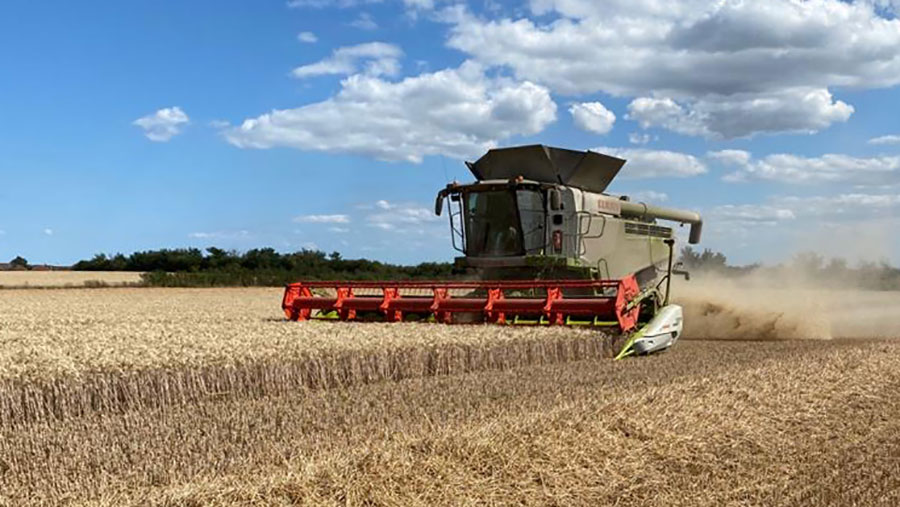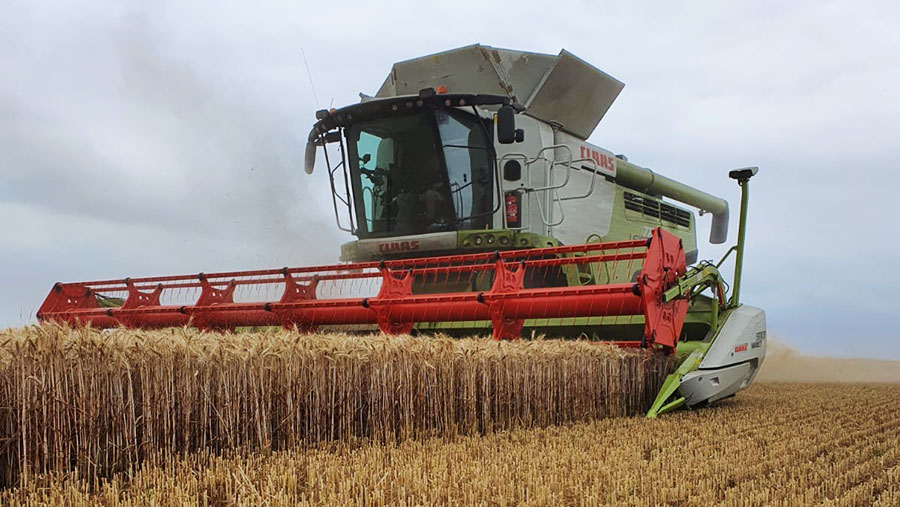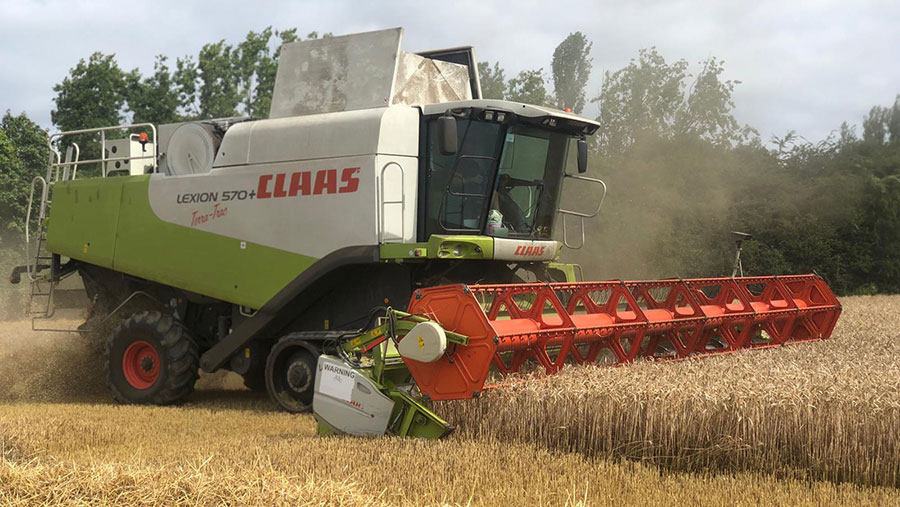Extreme season prompts early start to wheat harvest

The winter wheat harvest kicked off across the UK this week, with combines rolling into fields up to two weeks earlier than normal because of the extreme season.
Growers are pleasantly pleased with initial yields, despite the wet autumn and spring drought, with arable farmer James Atwood even seeing parts of fields touching 17t/ha for his milling wheat at New Hook Farm on the Isle of Sheppey.
Mr Atwood’s wheat was one of the first crops to be cut on 15 July, where 240ha of Crusoe and Skyfall have been harvested so far, averaging an exceptional 12.5-13t/ha. He has a further 800ha left to be cut.
See also: #FeedTheNation: Dwarf bean harvest off to flying start
He started combining significantly earlier than usual on his heavy clay soils, where a 10ha area of his Crusoe wheat yielded 16-17t/ha, breaking previous farm records.

© James Attwood
“We have never cut this early before. The dry spring brought our harvest forward by a good 10 days.
“Crop growth depends so much on the weather and the growing season. The long, warm spring helped crops do well and our heavy clay soils helped to retain moisture,” he says.
Quality is good at 14.5% moisture, a specific weight of 82kg/hL and protein levels of 14% for Crusoe and 13% for Skyfall.

© James Attwood
Wheat was planted during late September and early October, allowing him to get his crops in the ground before the weather turned wet.
Next on the harvest to-do list will be 170ha of maize for the farm’s anaerobic digestion plant.
Berkshire
Further west in Berkshire, Colin Rayner cut 27ha of his feed wheat Graham on Saturday, two weeks earlier than his 10-year average, with crops yielding an impressive 10t/ha, at 12.5% moisture.
“Yields so far of the Graham winter wheat are doing well, with high bushel weights.
“Admittedly, the wheat straw is still a bit green, but we are exceptionally pleased with this crop, considering the season, as starting harvest this early would normally mean poorer yields,” says Mr Rayner.
An initial sample taken from a trailer going into the grain store read 12.5% protein and a specific weight of 79.6 kg/hl, with both hagberg falling numbers well over 200.

Mr Raynor adds that he usually starts wheat harvest during August, making this year a real exception, as his winter barley, oilseed rape and winter wheat harvest all kicked off in July.
“Our harvest is normally spread over two months, but now that it is condensed into one, we have had to run another combine to help us balance workload so crops are cut at their optimum, which also saves money on drying costs,” he says.
His 250ha of wheat was planted on 19 September, just before the rain, when the soil was ploughed, power harrowed, drilled and then rolled, without a pre-emergecne spray application.
Cambridgeshire
Another farmer seeing an early start to his wheat harvest is Charles Leadbetter at Eastern Farms in Cambridgeshire, who says his combine is into wheat a week earlier than normal because of the extreme weather.
The crop of Zyatt milling wheat was drilled after sugar beet last autumn, which had removed some of the moisture, enabling cultivations to be carried out before the drill. “It was slow to emerge.”
Mr Leadbetter’s New Holland combine with 12.5m header started rolling yesterday (20 July) and the wheat was coming off at 14.5% moisture, with a specific weight of 74-75kg/hl, which he says is a bit low.
“Protein is 13%, which is where we want to be for our milling wheat,” he says.
Yields so far have been 8.2-8.3t/ha. “I thought it was going to be worse – maybe nearer 7-7.5t/ha.”
However, it is still below the farm’s 10-year average of about 10t/ha. “You can usually guarantee at least 9t/ha on this farm.”
The dry forecast means he hopes to make good progress with the rest of this 100ha block, followed by another 120ha block down the road.

